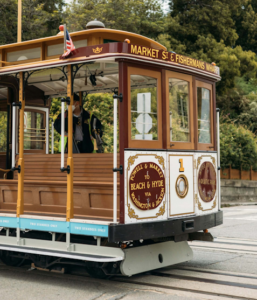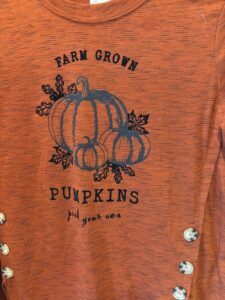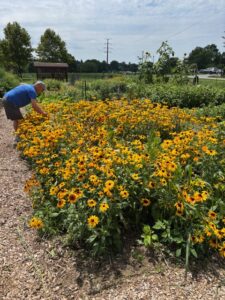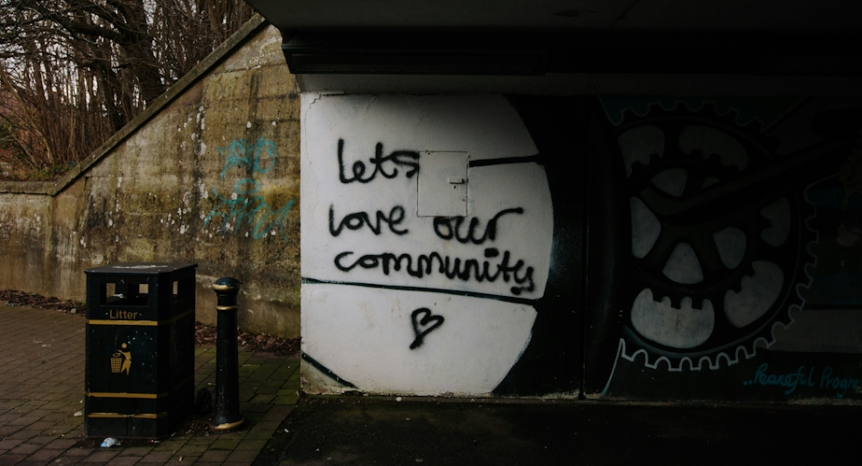Recently after attending a concert at our retirement community, I greeted a “newbie” resident on the way out of the auditorium and asked if she enjoyed the music. She said she had. “All of the amenities, programs, dining options etc. are even better than I expected,” she said. “However I haven’t experienced the sense of community I had hoped for.”
This caught me off guard and I wasn’t sure how to respond (not a common experience for me!). When this happens, I usually revert to asking a question in an effort to buy time to develop a more appropriate response. “How have folks responded when you made an effort to connect?” I asked.
This question drew a totally blank stare, like a deer in the headlights! After a few very awkward moments, she asked, “What do you mean?”
“I have come to accept that in order to ‘experience community’ we must be willing to initiate community on a regular basis.”
The headlights only got brighter, and she quickly got out of range of the old man asking the uncomfortable questions! Afterwards, I couldn’t get the incident out of my mind and kept ruminating—or “chewing on” as I like to say—the idea of community. I wondered what her definition of community was. Sometimes we miss seeing things that are right in front of us when we expect them to look a certain way.
Community has been much on my mind these days anyway as Rita and I have moved into a retirement “community” and begun looking for a new faith “community” so as is my habit when I’m wrestling with a concept, I decided to look it up to see what that might open up. But when I read the definitions—“a group of people living in the same place or having a particular characteristic in common” and “a feeling of fellowship with others, as a result of sharing common attitudes, interests, and goals”—I found them to be extremely limited and limiting.

Photo by Blu eye on unsplash.com
They probably wouldn’t include an encounter which I had while attending a rather intense training program in San Francisco. In my free time, I took some time to explore the city and as I headed toward the wharf, I heard a saxophone in the distance; it was good stuff! That is my favorite instrument and drew me like a magnet! By the sound of it, it could have been John Coltrane himself playing, but instead it was an elderly gentleman in tattered clothing standing behind an open, beat-up sax case with “Tips” printed on a piece of cardboard containing a few dollar bills and several coins. This street musician was beyond good! While playing he seemed to be transported to a more peaceful place. I certainly was!
As I went to toss a few dollars in his collection case, a somewhat selfish thought surfaced in my swirling gray matter. He stopped playing to thank me and I blurted out, “Actually I would prefer treating you to lunch at your restaurant of choice in exchange for hearing your story?” His eyes were bloodshot and I clearly smelled the alcohol. He looked at me rather strangely, then appeared to be weighing the options and said, “About 1:30, when the crowd thins out.” Besides being an accomplished musician, he obviously had a vivid imagination as there were only three of us within listening distance!
Later we settled down at an isolated table at the seafood fast food place just off of the bay that he had chosen, and he began sharing his story. Turns out he was among the group of Native Americans who took over Alcatraz in 1969 and remained for 19 months protesting the treatment of his people. He was a strong, gifted and proud man! He shared a lot of his difficult life journey with me including that he was biracial as the result of his mother being raped. I asked him how he managed to deal with all the pain and anger. He contemplated my question for a few moments and then responded calmly, “I try to numb the pain with alcohol and then provide some entertainment for people I don’t even know by attempting to blow the end off this old horn.”
He then said he had to leave to prepare for his evening performance, saying, “Thanks for lunch and more importantly, for listening to my story.” I wasn’t ready for the encounter to end so I showed up at his next show in time to get a front row seat on the park bench. Before starting his second song he said, “I’m sending out my version of John Coltrane’s “My Favorite Things” to my new friend and special listener, Mr. Terry!”
Now, this might not conform to Siri’s definition, but to my mind, it was a powerful experience of community. It must have been for it to stick with me for over 40 years! I never saw the sax player again, but a connection doesn’t have to last for it to be life changing. And this encounter, brief as it was, did change me in an important way; I can honestly say I have had a different relationship to the Native American “community” ever since that day. This incident so impacted my spiritual journey that I suspect it has the fingerprints of that Sneaky God I’m getting to know better every day all over it!
I’d like to propose a challenge: let’s set aside the conventional definition of community for the length of this post (you can always pick it up again at the end!). In our new definition, there are no boundaries. Community doesn’t have to be with someone who shares common living space, attitudes, or life experiences. It could be sponsoring a child in another country with the materials they need to begin attending school or taking a few minutes to thank the representative on the phone for going the extra mile to resolve an inaccurate charge on your credit card.
 When you expand your definition, openings for community crop up where you least expect it. Just the other day I was waiting, fairly patiently, by the dressing room as Rita was trying on several hundred blouses at Boscov’s. I struck up a conversation with an employee who was busy sorting through the many items that need to be returned to their appropriate rack in the women’s department.
When you expand your definition, openings for community crop up where you least expect it. Just the other day I was waiting, fairly patiently, by the dressing room as Rita was trying on several hundred blouses at Boscov’s. I struck up a conversation with an employee who was busy sorting through the many items that need to be returned to their appropriate rack in the women’s department.
As we made small talk, Rita stepped out wearing a shirt with a picture of a pumpkin on the front. We both immediately agreed it was a “must buy” and proceeded to explain to the woman why. “Pumpkin” is a nickname we use for each other and since our close friends have picked up on it, we have been receiving every type of “pumpkin” gift imaginable from them for years. The clerk quickly shared that it immediately brought back fond memories of delicious pumpkin fried treats her mother made years ago in Puerto Rico!
I immediately wanted to try making some for our next get together with our pumpkin-heckling friends. She apologized that she couldn’t remember all the ingredients off-hand, but explained that she was returning to visit her mother in a few days and would get the exact recipe. I gave her my card and she promised to forward the recipe to me. Another person who was nearby waiting for her daughter looked on in astonishment as this newfound friend and I began taking down artificial barriers and building community outside a dressing room inside Boscov’s!
When I gave this post to one of my “bouncers”—what I call friends who I bounce ideas off of—he said, “Easy for you to challenge your readers to reach out and build community but you must realize it’s damn scary for most of us who lean more to the introverted side of the scale!” A great reminder to be sensitive to the diversity of personalities and gifts!
 Our individual approaches to building community are just as diverse as our ways of living within it. Sure, not everyone is comfortable talking to strangers, but that’s only one way of building community. Can introverts write letters to prisoners? Help build a house with Habitat for Humanity? Check in on people they already know who are housebound or going through a tough time? There are infinite possibilities!
Our individual approaches to building community are just as diverse as our ways of living within it. Sure, not everyone is comfortable talking to strangers, but that’s only one way of building community. Can introverts write letters to prisoners? Help build a house with Habitat for Humanity? Check in on people they already know who are housebound or going through a tough time? There are infinite possibilities!
Remember, it doesn’t have to be a huge project involving lots of people, planning, or money. I firmly believe it is the little things we do each day that have the biggest impact on building community. What are you already doing that could be made into an opportunity for connection? A recent email was sent to our gardening community that read as follows:
Please advise our membership that the Gloriosa daisies in annual plot #31 are available for cutting by our gardeners or residents that would like a bouquet. I encourage folks to take bouquets to residents in the Glen in particular.
I was blown away by Bob’s community-building genius. Not only did he share his daisies with the gardening “community”, but by encouraging people to take bouquets to residents of the skilled nursing unit on campus, he inspired countless little acts of community building in others!
And here’s the kicker! One resident in skilled care asked her visiting daughter to take the “beautiful bouquet” she’d received to her neighbor across the hall who doesn’t have family and seldom gets visitors. Be careful, this community building can become contagious! And when you keep your mind (and heart!) open, the opportunities for it are endless.
(You can now pick up your old definition of community again—if you want to!)
QUESTIONS FOR DEEPENING THE SPRITUAL JOURNEY
- Think of a powerful experience of community you have had. What made it so powerful to you?
- What does “community” mean to you? Who qualifies to be part of your community?
- Does community need to be enduring? Can a one-time interaction create a sense of community? Why or why not?
- How did tabling the conventional definition of community and temporarily embracing a larger one feel for you? Did you feel drawn to changing your definition permanently?
- How might an enlarged understanding of community nurture and possibly challenge you at this stage of your life? For those of us who are seeking out this Sneaky God, what definition might you being called to embrace as the next step in your faith journey?
- What sort of community do you have in your life currently? Do you have enough? Explain.
- What are the ways you are currently building community in your life?
- What are some ways that you could build more? Are you willing to commit to putting one or two of those ideas into practice in the next month?
Banner Photo by Mike Erskine on Unsplash


Thank you so much for sharing your experiences and ideas about community. For me, I ask the question “What do I hope to nurture from being in community?” What I want invariably defines the different types of “community experience” I knowingly try to foster. I agree that reaching out is half the battle and part of the fun and adventure. Those with whom I share deep and personal thoughts and questions are few in number, and gathering with them is one of the most intimate and sacred times for me. Terry, I hope you and your wife continue to enjoy… Read more »
Terry, your words in this blog, in particular, your two stories of interaction with the saxophonist and the Boscov employee, reminded me of one of the major themes of the late Pope Francis: encounter. Tom